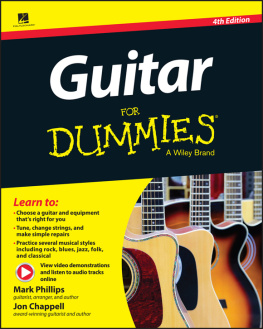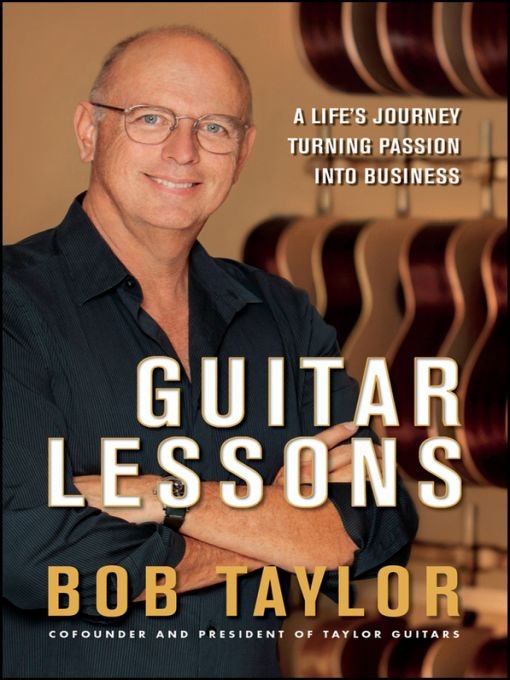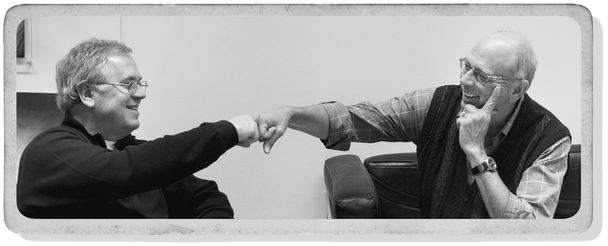Table of Contents
I dedicate this book to my partner Kurt Listug, whose contributions to the success of Taylor Guitars are equal in every way to mine.
FOREWORD
My cousin, Bob Taylor, asked me to write a foreword for his upcoming book this summer. The request almost coincided with the death of his uncle, Robert Taylor, for whom he most likely was named, so a foreword seemed a just cause. The Taylors are a family who lived the hardscrabble life of Northeast Montana. They are a pragmatic, hard-working, intelligent clan that has married into my mothers family twice. Regardless of our relationship, Bob has written a book that makes one admire his ingenuity and the perseverance of his partners in Taylor Guitars. As a young man, Bob Taylor found his passion in shop classhow to creatively build thingsit consumed him. It reminded me of a statement I once saw above a dressing room mirror in an arena in 1970. It simply said: Make your work your play and play your workSri Chinmoy. Bobs book is an intriguing story of making that concept a reality.
Bobs grandfather, Pierre, whom Bob bears a light resemblance to, was a man of many words. He loved to tell stories; in fact, he wrote a history of his family for the successive generations. Pierre Taylor told stories about living on the homestead land in eastern Montana. He described the survival skills necessary to live on a homestead 100 years agothe challenges such as traveling by horse-drawn wagons to Canada to catch fish and salting them in barrels to have food stocked away for the winter; making long trips to the woods by the Missouri River to gather enough fuel to survive the brutal winters on the plains. The Taylors spent much of their time scratching out a living, and Uncle Pierre wanted the successive generations to remember the harsh land and life that colored their familys self-determination. What Bob does with his business reflects this determination that made his grandfather proud.
I knew Bob as a youngster only by letters from his mom in our family Robin. In that day and age, before e-mail, there was a monthly letter sent out called a Robin that kept us abreast of the kin. The Taylors were a Navy family stationed in San Diego. Dick Taylor, Bobs dad, was the tallest person in the family until I outgrew him a decade later. On the family ranch there was a pencil mark on the door frame of Dicks height that I later would eclipse. Bob was reported in the Robin to be absorbed in his guitar-making business, which struggles from month to month to make ends meet. What Bob does with his business reflects the same determination that made his grandfather proud.
I called Bob about 15 years ago to ask him about purchasing a couple of guitars as presents for my twin boys. I had heard about how Bobs struggling business had become a successful enterprise and that his guitars were exceptional. My former wife and partner, June, a music fan, while hanging around backstage at a Grateful Dead concert, saw the respect a musician had for his Taylor guitar and sent me on a mission. Find your boys a Taylor guitar. It would make them a perfect gift. By now, most of my family has a Taylor in their house. Some of them cant play more than a couple of chords (like me) and others have a real feel for playing, but they all love their Taylor made guitars. I thought it might be nice to include a personal testimony from boys-to-adults about their guitars:
Ben: Several years ago a friend of mine revealed to me that his father had been a painter and that he himself was a dedicated pianist throughout his childhood. When I asked him why he did not choose a path in the visual arts or in music, he explained that he did not want his art to be heard or seen during the moments of composition. Even the thought of an ear at the wall bothered him; even a distant eye on an unfinished brushstroke generated discomfort. He told me that he felt most at ease when he experienced a degree of privacy in the composition of his art, which ultimately led him to poetry.
After our discussion, I thought about my relationship with the arts and, in particular, poetry. As a poet, I understood that I, too, value poetry as one of the most private arts. However, during the late hours of the night, when I am not working on poems or when Ive grown exhausted by my writing voice, I often pick up my Taylor 710 dreadnought and find a quiet nook to carve out an intimate bond with my guitar. Those moments provide a crucial outpour, an escape from language.
Charley: Graduation nears and my father tells me theres a pre-graduation gift waiting in my bedroom; my father houses a four string mini-Martin in Montana, that at 6 foot 8 inches tall, Ill never quite comprehend. I open an oversized box to find my first, my own, guitar: a Taylor CE, cutaway. The spruce wood oiled and rich, contrasted by the rosewood outline, and the mother-of-pearl inlays, is graciously inviting. I tentatively pick up my gift to hear what voice it has, for me and my buddies, around our campfire. A first scale is fingered, a chord strummed, and my love for this instrument is instilled for a lifetime.
Once in a while, Bob comes to LA for business, gives a call, and comes to a game. We wave at each other from the floor to the stands. There is a professional pride in knowing were both working the same way at a different game. While on a plane, I was reading Bobs account of when he got the a-ha moment of knowing that one guitar at a time is the right way to teach his workforce and build the guitars, when one of the Lakers captains, Derek Fisher, got up from his seat and asked me to read a portion of my book from 20 years ago, Sacred Hoops, which stated that the repetition of skills that is required of players is what makes the execution of our triangle offense possible. It brings a sense of accomplishment to refine these skills. Reading how Bob found a way to hone the basic techniques of making a guitar down to the easiest possible denominator verified my admiration for his perseverance. There is a way to work and make it enjoyable, and yet dignified, for those who want to have excellence in their work. Bob Taylor has cut that Gordian knot that makes his guitars things to be cherished.
Phil Jackson
ACKNOWLEDGMENTS
Im honored to say thank you to a few people for their contribution to this book. To Chalise Zolezzi, who first brought this idea to me and continually bestowed confidence in me during the writing process. To Matt Holt for believing it was a good project and for keeping it interesting along the way. To Shannon Vargo who took stories that I thought were pretty good and made them better.
Id like to thank Jonathan Forstot, for his good sense, and for naming this book. Thanks to Cory Sheehan and Rita Hoffman for their quality design on the book jacket and photo inserts. And to the staff at Taylor Guitars who are always on my side and help me in every way they can.

















